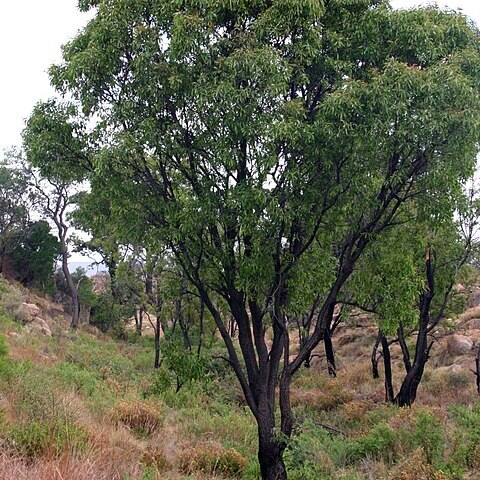Perianth petaloid, puberulous or tomentose, valvate, tubular in bud, somewhat clavate above, splitting into 2 major lobes at anthesis releasing the style, one lobe free almost to the base consisting of a single segment, the other with 3 segments, united almost to the apex, curling back to reveal the anthers.
Leaves alternate, usually clustered near the ends of the branchlets, simple, lanceolate or elliptic, occasionally falcate, obovate or ovate, petiolate or subpetiolate, entire, coriaceous or subcoriaceous, glabrous or pubescent especially on undersurface.
Flowers hermaphrodite, sessile or pedicellate, arranged in dense mostly terminal and solitary spikes or racemes, occasionally axillary, each flower in the axil of a small bract; involucre absent.
Ovary with 1 ovule, with a long persistent filiform style terminating in a simple stigma; stigma slightly geniculate at base; ovary and subsequently the fruit clothed with long straight hairs.
Hypogynous scales 4, free, present at the base of the ovary, triangular, acute or obtuse, often deltoid, persistent.
Evergreen trees or shrubs.
Fruit a globose nut.
